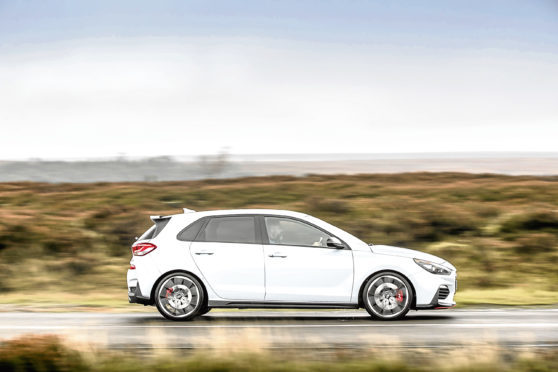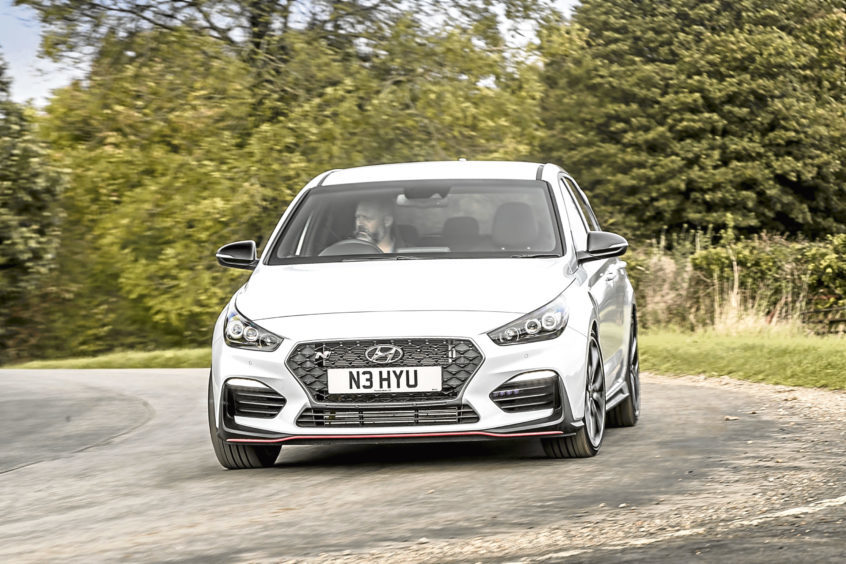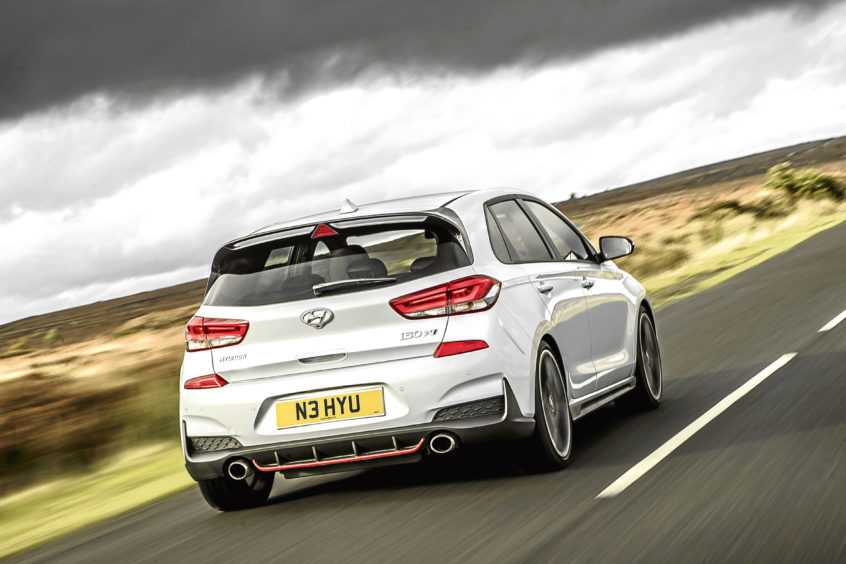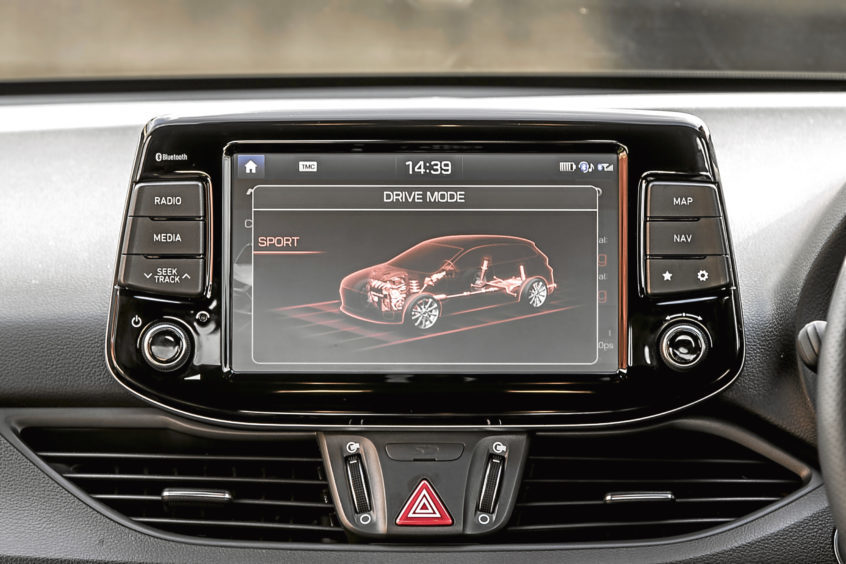It was without high hopes that I slipped into the driver’s seat of the i30 N in a South Queensferry car park.
The car is Hyundai’s first attempt at a hot hatch. The South Korean company has established a reputation for dependable cars that are easy but unexciting to drive. Their stab at a coupe, the odd looking Veloster, was put out of its misery after just three years of production.
Five minutes after sparking up the engine and setting off in the i30 N I was grinning from ear to ear, however. Hyundai may never have made a hot hatch before but they’ve hit the bullseye on the first attempt.
The i30 N’s design was overseen by the man behind the original TT and its driving by the chap who used to head up BMW’s peerless M series of performance models. Learn that and it’s perhaps less surprising that Hyundai’s first hot hatch looks great and drives well.
It’s available in two guises, the i30 N and a Performance version with extra power. Both cars get a 2.0 litre turbocharged petrol engine; the standard model getting 247bhp and the Performance model seeing power upped to 271bhp.
That’s more than a VW Golf GTI, which turns out 227bhp and 242bhp with its Performance Pack.
I took both versions for a spin (details at the bottom are for the standard model). They’re both absolutely tremendous. The base version gets from 0-62mph in 6.4 seconds, with the souped up model trimming 0.3 seconds from that time.
There’s electronically controlled suspension and a choice of five drive modes, including an option to customise your own set up. Launch control lets you practice 0-62mph times and rev-matching double declutches on downshifts to improve braking. You can even raise and lower the volume of the exhaust, turning it from a throaty roar into a more muted thrum.
I started off in sport mode with the exhaust on full chatter but toned it down when heads began to turn as I was pootling through Limekilns.
In normal setting the suspension’s forgiving enough to cover long distances in comfort, and in that mode it still grips like a limpet through corners.
The i30 N costs £25,000 and the Performance £28,000. That’s not much cheaper than hot hatches with greater badge pedigree, but the Hyundai steals a march on its rivals with generous standard kit.
On the basis of this, I can’t wait to see the next cars developed by Hyundai’s “N” performance team.
Price:
£25,010
0-62mph:
6.4 seconds
Top speed:
155mph
Economy:
40.4mpg
CO2 emissions:
159g/km




